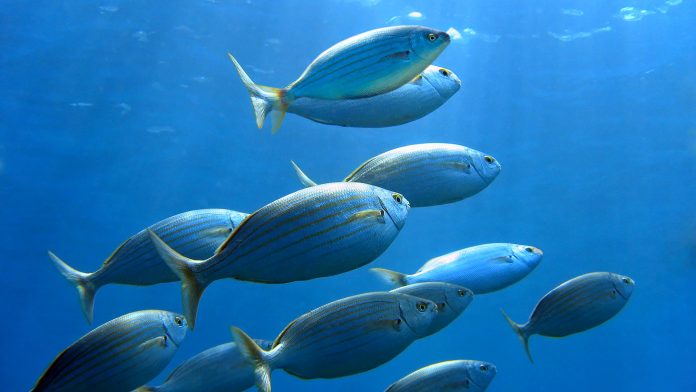A large research consortium dedicated to studying the transmission of parasites in wild and farmed fish has published its latest results from the Canary Islands and the Valencia region.
Researchers from the Service for the Analysis, Research and Management of Wild Animals Group (SAIGAS) of the University of Valencia, Spain, recently published the results of project ‘Parapez-2’, which was designed to assess the transmission of parasites among wild fish and fish in farms in the Canary Islands and the Valencia region.
In the second edition of the project, which is co-funded by the European Maritime and Fisheries Fund (EMFF), the SAIGAS research group analysed over 11,000 underwater images of photo-traps, identifying a variation in the transmission of parasites in the wild species of these areas, including major predators such as the bottlenose dolphin or the red tuna. These images were taken at aquaculture facilities in the open sea of the provinces of Castellón and Alicante, in the Valencia region, and Lanzarote, Gran Canaria, Tenerife and La Palma, in the Canary Islands.
557 specimens of farmed and wild Osteichthyes belonging to the participating farms have been studied. Among the most frequently found parasitic species in farmed animals, such as the bass, sea bream or sea bass, were Sparicotyle chrysophrii, Sparicotyle pancerii, Lamellodiscus echenesis, and Calceostoma calceostoma. According to UCH CEU Veterinary Science lecturer Jordi López Ramon, head of the Parapez project, said: “The presence of parasites in living beings, including marine species, is common, and a vast majority are not pathogenic. Furthermore, the amount of these that can be transmitted to human beings is very low. This is why studying them is important, to identify the type of parasites present in aquaculture and wild species, so that their impact can be decreased, and the health of the fish can be improved.”
The results of the SAIGAS project
The research team announced the results of the parasitological diagnosis laboratory tasks in the virtual event ‘Charlas del mar’, which included the participation of representatives of the aquaculture sector on a national level, as well as numerous researchers linked to the aquatic and parasite worlds.
The study reveals that among wild species there is greater parasitic diversity, with the presence of species Axine belone, Atriaster heterodus, Atrispinum acame, Gastrocotyle trachuri, and Pyragraphorus pyragraphorus. Furthermore, parasitosis linked to the abdominal cavity and digestive tract have only been found in wild species, both in the Valencian region as well as the Canary Islands. Among the latter, the most common were parasites belonging to phylum Nematoda, followed by phylum Acantocephala.
The CEU UCH research team which participated in the project comprised of lecturers from the faculty of Veterinary Sciences Jordi López Ramon, Jesús Cardells Peris, Víctor Lizana Martín, Juan Manuel Lomillos, Alejandra Escudero Cervera and Patricia González. The Association for the Defence of the Aquaculture Health in the Valencia region (ADS ACUIVAL) and from the Canary Islands (ADS ACCAN) are also linked to the project, which also relies on the collaboration of the Corporate Aquaculture Association of Spain (APROMAR) for its dissemination.



